Chart Color Schemes
est. as @ -- *
ABS ERP | -- people | --
2021 Census | -- people
Sales Activity
Curious about local property values? Filter the chart to assess the volume and appreciation (including resales) trends and regional comparisons, or scroll to the map below view this information at an individual property level.
Find a Recent Sale
Sales Detail
Population
Jacka lies within the top 10% of areas nationally in terms of population growth performance according to AreaSearch analysis of short and medium-term trends
Jacka's population is around 1,539 as of Aug 2025. This reflects an increase of 827 people since the 2021 Census, which reported a population of 712 people. The change is inferred from the estimated resident population of 678 from the ABS as of June 2024 and an additional 297 validated new addresses since the Census date. This level of population equates to a density ratio of 528 persons per square kilometer. Jacka's growth of 116.2% since the 2021 census exceeded the state's growth rate of 5.7%. Population growth for the area was primarily driven by natural growth, contributing approximately 68.2% of overall population gains during recent periods.
AreaSearch is adopting ABS/Geoscience Australia projections for each SA2 area, as released in 2024 with a base year of 2022. For areas not covered and years post-2032, age group growth rates from the ACT Government's SA2 area projections are adopted, using 2022 as the base year. Exceptional growth is predicted over the period, placing Jacka in the top 10 percent of national areas. The area is expected to expand by 769 persons to 2041 based on the latest population numbers, recording a decrease of 6.0% in total over the 17 years.
Frequently Asked Questions - Population
Development
AreaSearch analysis of residential development drivers sees Jacka recording a relatively average level of approval activity when compared to local markets analysed countrywide
Jacka has averaged approximately 18 new dwelling approvals annually over the past five financial years, totalling 93 homes. As of FY26 so far, 99 approvals have been recorded. The population has fallen during this period, suggesting that new supply has likely kept up with demand, offering good choice to buyers.
The average expected construction cost value for new dwellings is $377,000. Compared to the Australian Capital Territory, Jacka records 164.0% more building activity per person, which should provide buyers with ample choice. This level of activity is well above the national average, reflecting strong developer confidence in the area. Recent building activity consists entirely of detached dwellings, preserving the area's low density nature and attracting space-seeking buyers. Interestingly, developers are building more traditional houses than the current mix suggests (44.0% at Census), indicating continued strong demand for family homes despite density pressures.
The location has approximately 178 people per dwelling approval, indicating an expanding market. With population expected to remain stable or decline, Jacka should see reduced pressure on housing in the future, potentially creating opportunities for buyers.
Frequently Asked Questions - Development
Infrastructure
Jacka has emerging levels of nearby infrastructure activity, ranking in the 22ndth percentile nationally
Changes to local infrastructure significantly impact an area's performance. AreaSearch has identified 11 projects that may affect this region. Notable ones include Gungahlin Tennis Facility (Amaroo Tennis Centre), Jacka Social Housing Apartments, Aunty Agnes Shea High School, and Gold Creek Homestead Precinct. The following list details those most relevant.
Professional plan users can use the search below to filter and access additional projects.
INFRASTRUCTURE SEARCH
 Denotes AI-based impression for illustrative purposes only, not to be taken as definitive under any circumstances. Please follow links and conduct other investigations from the project's source for actual imagery. Developers and project owners wishing us to use original imagery please Contact Us and we will do so.
Denotes AI-based impression for illustrative purposes only, not to be taken as definitive under any circumstances. Please follow links and conduct other investigations from the project's source for actual imagery. Developers and project owners wishing us to use original imagery please Contact Us and we will do so.
Frequently Asked Questions - Infrastructure
North Gungahlin Community Health Centre
New community health centre in Casey (North Gungahlin) delivering integrated primary care with a strong focus on child, youth and family services. Part of a 2.4-hectare community facilities precinct. To be operated by Canberra Health Services with multidisciplinary teams including GPs, nurses, allied health and mental health professionals. Early works funding allocated in 2025-26 ACT Budget.
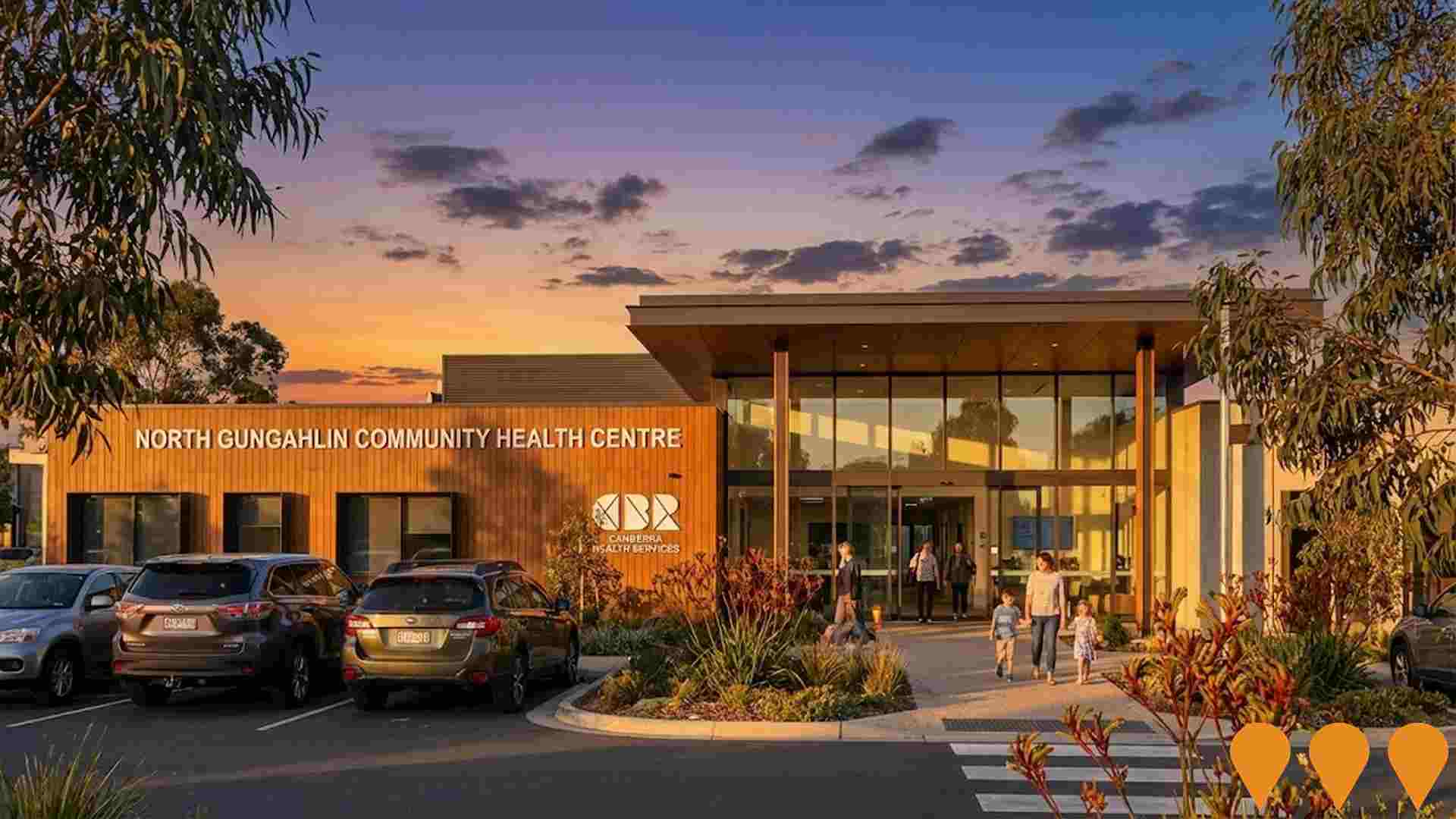
Aunty Agnes Shea High School
New high school for Years 7-10 with capacity for 800 students. Features modern, sustainable facilities including double gymnasium, specialist learning environments, and community sporting facilities. Named after respected Ngunnawal Elder. Expected to open in 2025.

Gold Creek Homestead Precinct
An $80 million retirement village extension and aged care development featuring 45 new two- and three-bedroom independent living villas by Keyton, plus a separate 124-bed residential aged care facility by Arcare. The project includes restoration and repurposing of the historic Gold Creek Homestead (dating to 1860) into a multi-function amenity space with arts and crafts studio, surrounded by landscaped gardens. The development prioritizes sustainability with 7-star NatHERS energy rating, 5-star Green Star Community rating, and incorporates heritage preservation, bush tucker gardens, yarning circle, and intergenerational community spaces.
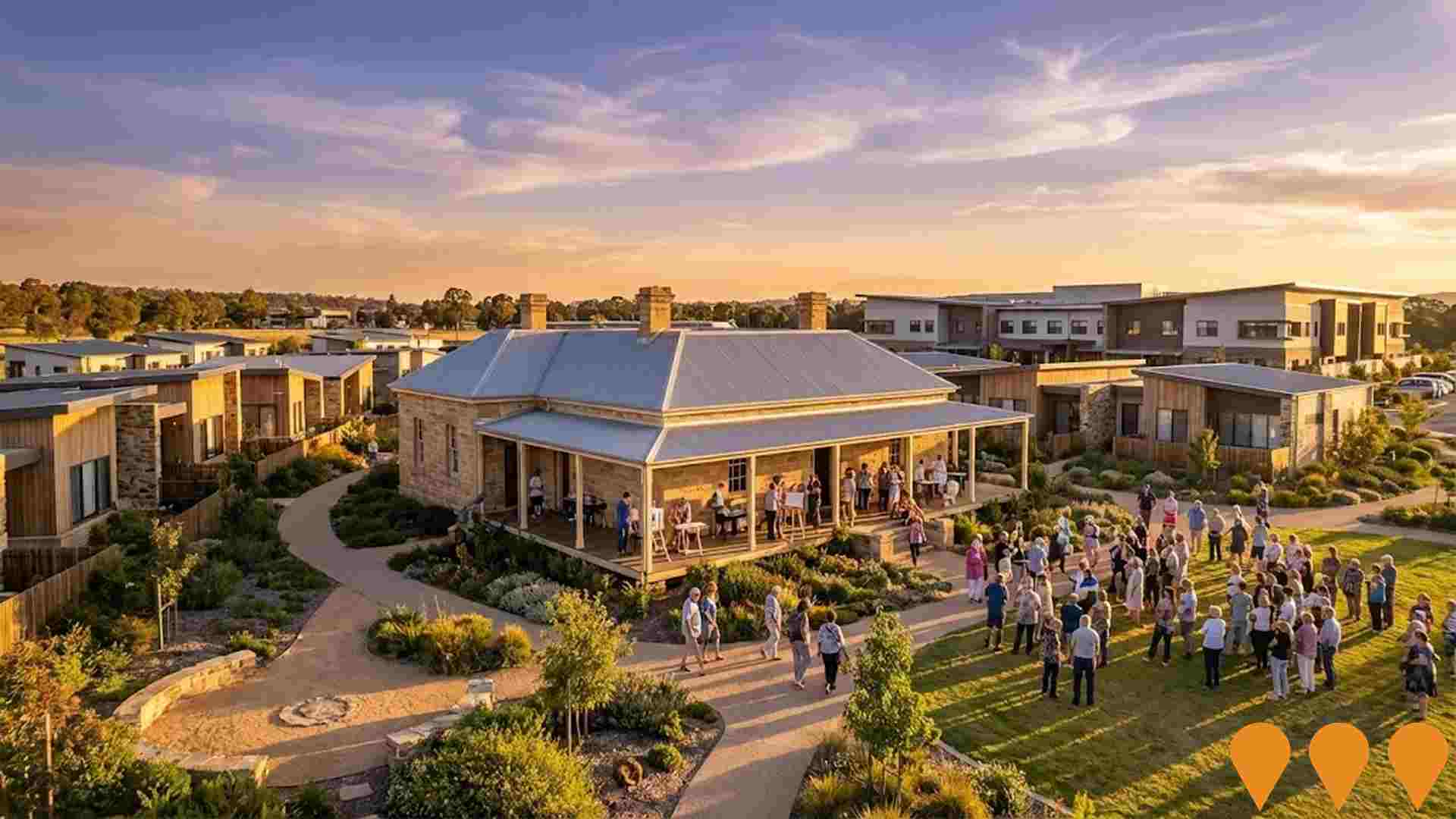
Casey Emergency Services Station
New ACTAS Ambulance and Fire Station as part of Casey community services precinct. Will enhance emergency response times for growing Gungahlin community. Part of broader precinct development including health centre and indoor sports facility.
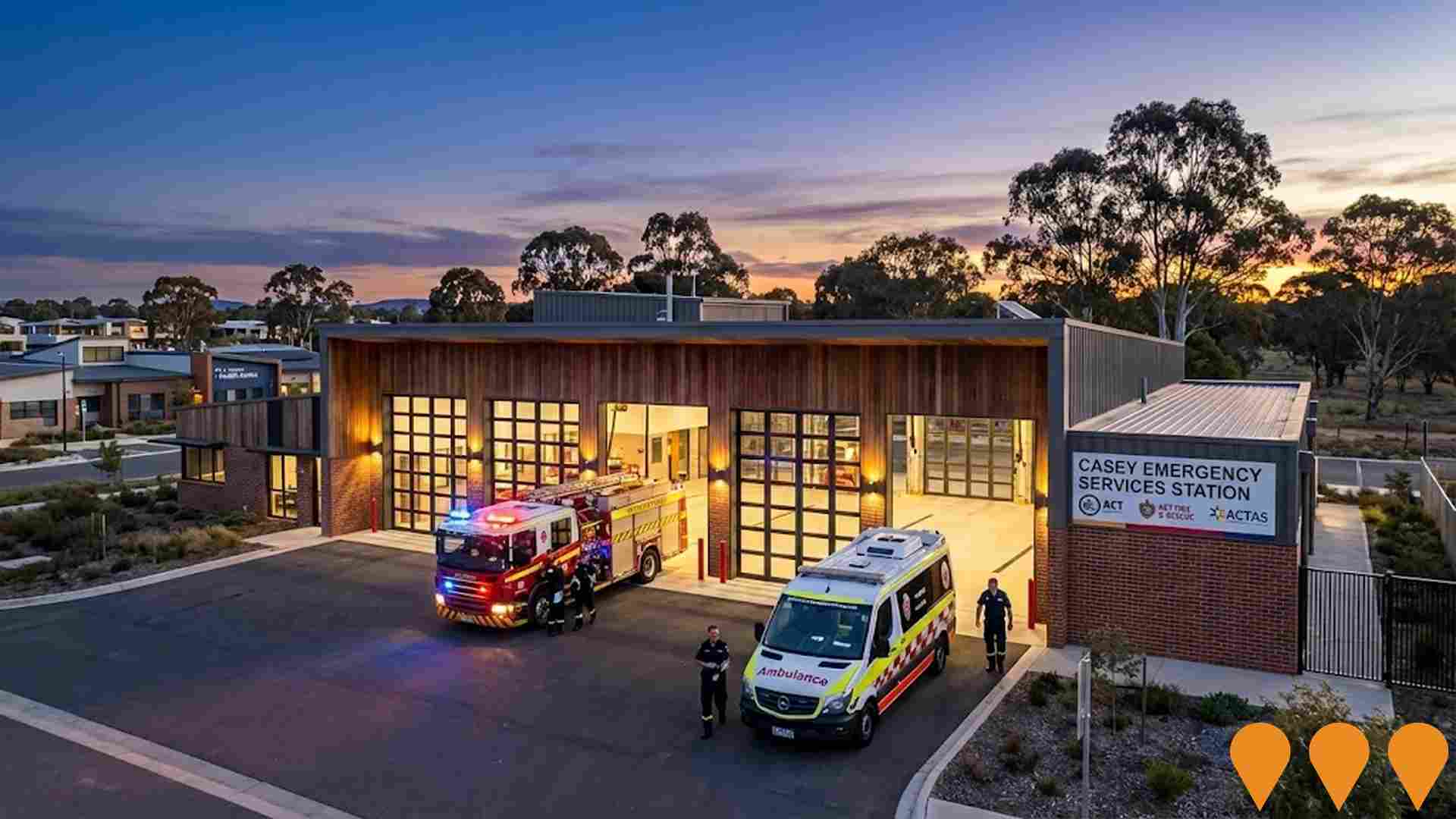
Gungahlin Tennis Facility (Amaroo Tennis Centre)
New regional tennis hub featuring 10 full-size International Tennis Federation standard courts, 2 Hot Shots courts for junior development, hitting wall, modern pavilion with change rooms and community space, LED lighting for night play, accessible pathways, and 33-vehicle carpark. The facility supports diverse programs including Hot Shots, cardio tennis, school programs, and competitive leagues for all ages and abilities. Partnership between ACT Government, Tennis Australia and Tennis ACT with NK Foundation support. Construction commenced September 2025 by Complex Co. Courts available for online booking through Tennis Australia platform.
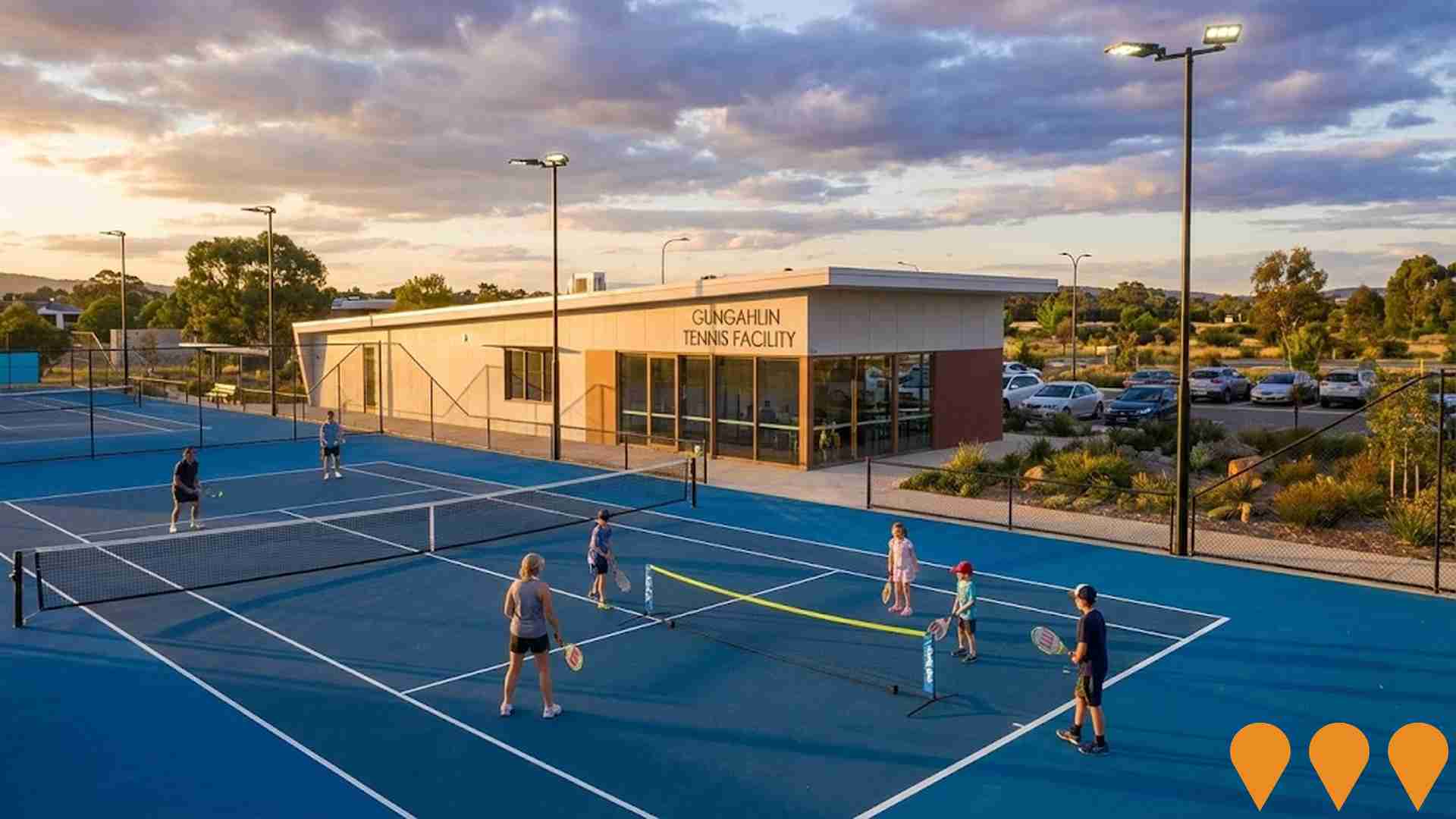
Casey Indoor Sports Facility
Indoor sports facility within the Casey 2.4-hectare community services precinct. Will provide local residents, sporting groups and organisations with access to better amenities and state-of-the-art facilities.

Throsby Residential Development
106-hectare greenfield development by the ACT Government's Suburban Land Agency accommodating up to 1100 dwellings. The suburb was developed with a strong focus on environmental sustainability principles and protection of the adjacent Mulligans Flat and Goorooyarroo Nature Reserves. The development includes a mix of residential blocks (250-750sqm) and multi-unit sites.
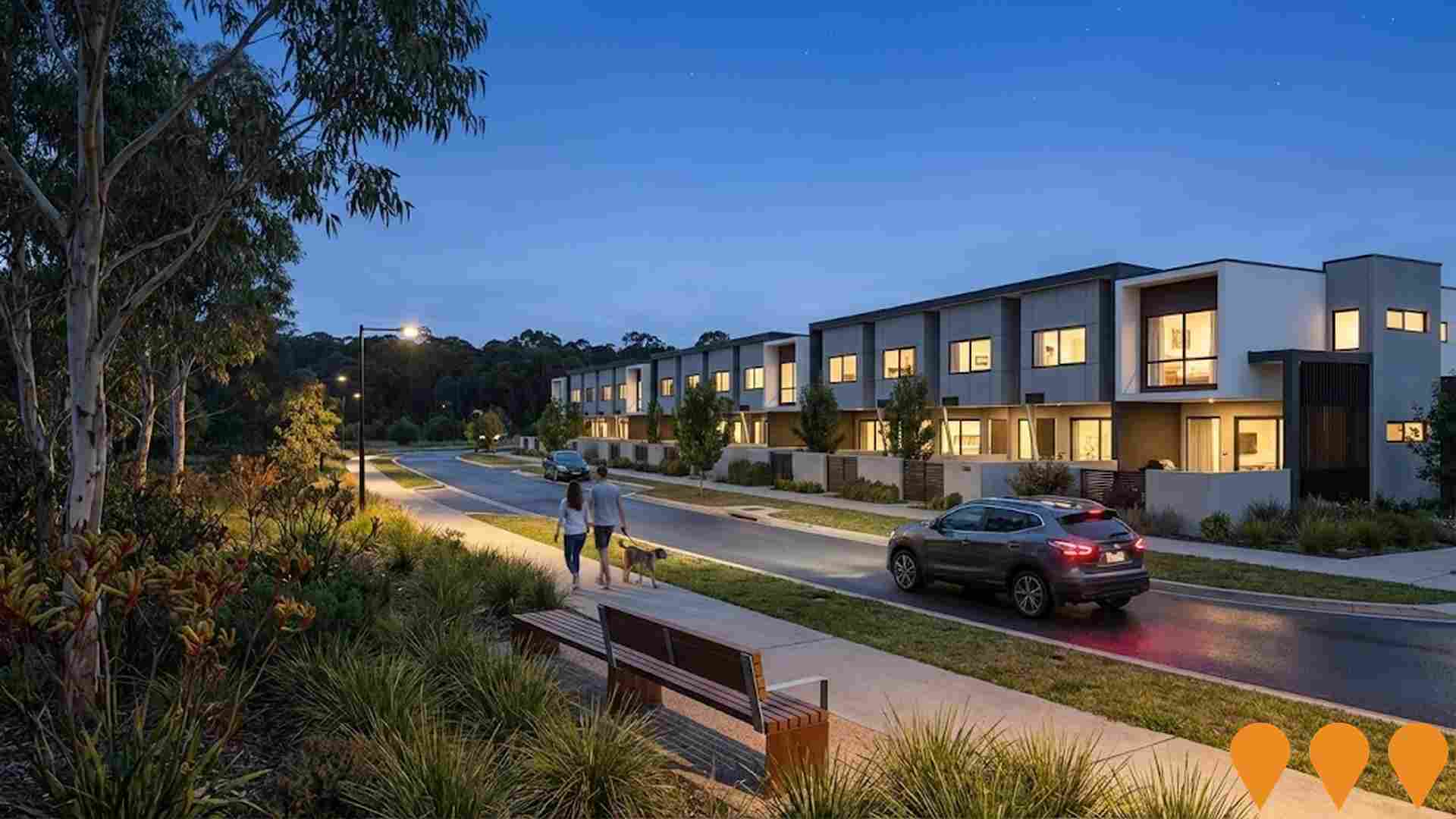
Gungahlin Community Facilities Upgrades
Multiple community facility improvements including new playground in Amaroo, Palmerston shops upgrades, new cricket nets at Bonner oval, and female-friendly changeroom upgrades at multiple ovals.

Employment
Employment performance in Jacka exceeds national averages across key labour market indicators
Jacka has an educated workforce with a low unemployment rate of 3.1% and estimated employment growth of 1.6% in the past year as of June 2025. The unemployment rate is 0.3% lower than the Australian Capital Territory's rate of 3.4%, with workforce participation at 79.9%.
Key industries include public administration & safety, health care & social assistance, and professional & technical services. Jacka specializes in health care & social assistance, with an employment share 1.4 times the regional level, but has a limited presence in public administration & safety at 23.5% compared to the regional average of 30.4%. The area offers limited local employment opportunities, as indicated by Census data on working population versus resident population. In the 12 months prior, employment increased by 1.6%, with labour force growth also at 1.6%, while unemployment remained unchanged.
This contrasts with the Australian Capital Territory where employment rose by 1.9%, labour force grew by 1.6%, and unemployment fell by 0.3 percentage points. Jobs and Skills Australia's national employment forecasts from May 2025 project national employment growth of 6.6% over five years and 13.7% over ten years, with varying rates across industry sectors. Applying these projections to Jacka's employment mix suggests local growth of approximately 6.9% over five years and 14.0% over ten years.
Frequently Asked Questions - Employment
Income
Income metrics indicate excellent economic conditions, with the area achieving higher performance than 75% of national locations assessed by AreaSearch
AreaSearch's latest postcode level ATO data for the financial year ending June 2022 shows that median income in Jacka was $64,666 and average income was $73,994. This is higher than national figures of a median income of $68,678 and an average income of $83,634 for the Australian Capital Territory. Based on Wage Price Index growth of 13.6% from financial year 2022 to September 2025, estimated median income in Jacka would be approximately $73,461 and average income would be around $84,057. According to the 2021 Census, incomes in Jacka rank highly nationally, between the 76th and 89th percentiles for households, families, and individuals. The largest income bracket comprises 48.3% of residents earning between $1,500 and $2,999 weekly. High housing costs consume 18.5% of income in Jacka, but strong earnings place disposable income at the 72nd percentile nationally. The area's SEIFA income ranking places it in the 4th decile.
Frequently Asked Questions - Income
Housing
Jacka displays a diverse mix of dwelling types, with ownership patterns similar to the broader region
The dwelling structure in Jacka, as per the latest Census, consisted of 44.5% houses and 55.5% other dwellings (semi-detached, apartments, 'other' dwellings). This compares to the Australian Capital Territory's figures of 66.3% houses and 33.7% other dwellings. Home ownership in Jacka stood at 5.6%, with mortgaged dwellings at 61.0% and rented ones at 33.3%. The median monthly mortgage repayment was $1,772, below the Australian Capital Territory average of $2,123. The median weekly rent in Jacka was $450, compared to the Australian Capital Territory's $462. Nationally, Jacka's mortgage repayments were lower than the Australian average of $1,863, while rents were substantially higher at $375.
Frequently Asked Questions - Housing
Household Composition
Jacka features high concentrations of group households, with a fairly typical median household size
Family households are 75.1% of all households, consisting of couples with children (48.1%), couples without children (14.3%), and single parent families (12.2%). Non-family households make up 24.9%, including lone person households at 19.0% and group households at 3.8%. The median household size is 2.9 people, which aligns with the Australian Capital Territory average.
Frequently Asked Questions - Households
Local Schools & Education
Jacka shows strong educational performance, ranking in the upper quartile nationally when assessed across multiple qualification and achievement indicators
Educational attainment in Jacka exceeds Australian averages significantly. 44.8% of residents aged 15+ have university qualifications, compared to Australia's 30.4%. Bachelor degrees are the most common at 26.5%, followed by postgraduate qualifications (16.0%) and graduate diplomas (2.3%). Vocational credentials are also prevalent, with 28.5% of residents aged 15+ holding them - advanced diplomas at 11.2% and certificates at 17.3%.
Educational participation is high, with 42.4% of residents currently enrolled in formal education. This includes 15.3% in primary education, 8.8% in secondary education, and 5.3% pursuing tertiary education. Schools appear to be located outside Jacka's immediate boundaries, necessitating families to access them in neighboring areas.
Frequently Asked Questions - Education
Schools Detail
Nearby Services & Amenities
Transport
Transport servicing is good compared to other areas nationally based on assessment of service frequency, route connectivity and accessibility
The transport analysis indicates two active stops in Jacka, both serving buses. These stops are covered by two routes, offering a total of 355 weekly passenger trips. Transport access is rated good, with residents typically located 322 meters from the nearest stop.
Service frequency averages 50 trips per day across all routes, resulting in approximately 177 weekly trips per individual stop.
Frequently Asked Questions - Transport
Transport Stops Detail
Health
Jacka's residents boast exceedingly positive health performance metrics with a range of health conditions having marked impacts on both younger and older age cohorts
Health outcomes data shows significant results across Jacka for various health conditions impacting both younger and older age cohorts. Approximately 56% of the total population (~869 people) have private health cover, compared to 58.6% in the Australian Capital Territory.
Mental health issues and asthma are the most common medical conditions, affecting 8.0 and 6.4% of residents respectively. Around 80.6% of residents report being completely free of medical ailments, compared to 76.4% in the Australian Capital Territory. Jacka has 4.8% (74 people) of its population aged 65 and over, lower than the 8.3% in the Australian Capital Territory. Health outcomes among seniors require more attention than those for the broader population.
Frequently Asked Questions - Health
Cultural Diversity
Jacka is among the most culturally diverse areas in the country based on AreaSearch assessment of a range of language and cultural background related metrics
Jacka has a high level of cultural diversity, with 46.5% of its population born overseas and 52.6% speaking a language other than English at home. Christianity is the predominant religion in Jacka, making up 32.0% of people. Hinduism is notably overrepresented, comprising 15.5% of the population compared to the Australian Capital Territory average of 9.5%.
The top three ancestry groups are Other (26.3%), Australian (16.9%), and English (15.9%). There are also notable differences in the representation of certain ethnic groups: Indian is overrepresented at 13.2% compared to the regional average of 6.4%, South African at 1.3% versus 0.4%, and Korean at 1.5% versus 1.2%.
Frequently Asked Questions - Diversity
Age
Jacka hosts a very young demographic, ranking in the bottom 10% of areas nationwide
Jacka has a median age of 31, which is younger than the Australian Capital Territory figure of 35 and substantially under the Australian median of 38. Compared to Australian Capital Territory, Jacka has a higher concentration of residents aged 35-44 at 24.2%, but fewer residents aged 55-64 at 2.5%. This concentration of 35-44 year-olds is well above the national figure of 14.2%. Between 2021 and present, the median age has increased by 1.4 years from 30 to 31, reflecting an aging population. Key changes include the growth of the 45 to 54 age group from 10.8% to 14.0%, and the increase of the 65 to 74 cohort from 2.1% to 4.7%. Conversely, the 5 to 14 cohort has declined from 20.9% to 14.9%, and the 0 to 4 group has dropped from 10.1% to 8.8%. Population forecasts for 2041 indicate substantial demographic changes for Jacka, with the 55 to 64 cohort projected to grow by 183%, adding 71 residents to reach 111. In contrast, population declines are projected for the 15 to 24 and 35 to 44 cohorts.


